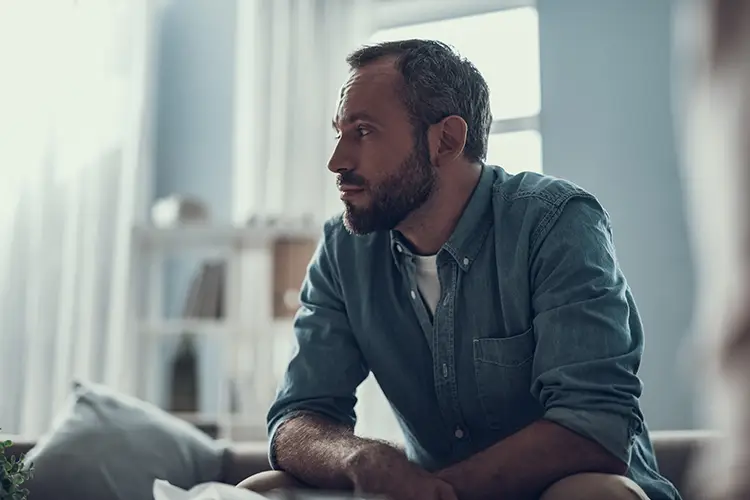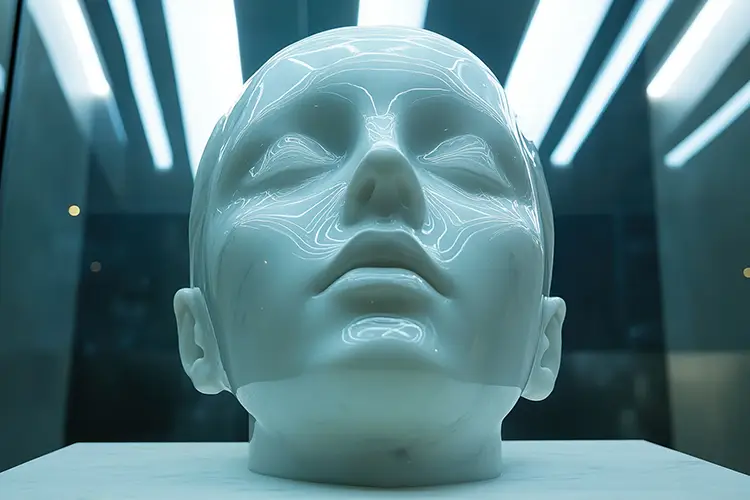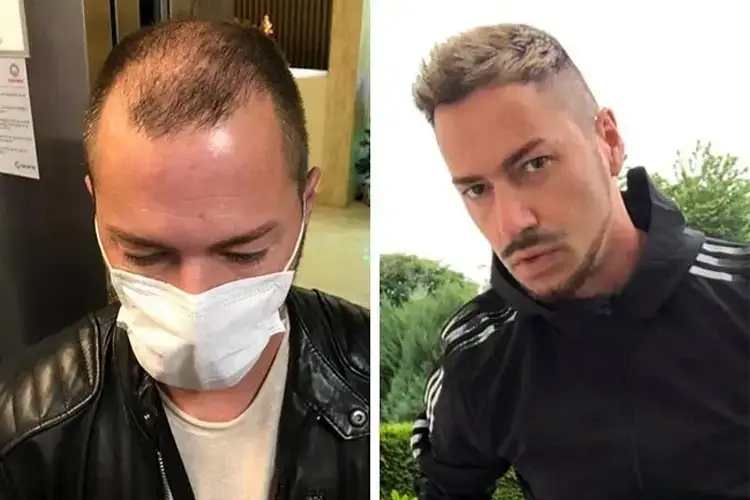
Why Many Men Don’t View Hair Transplants as Cosmetic Surgery
Hair loss affects men not only externally, but also deeply within their self-image. It often begins gradually; the hairline recedes, the crown of hair thins, and the first bald spots appear. Initially, people joke about it, laugh with their hairdresser, or conceal the loss with hats. But at some point, the mood changes – looking in the mirror hurts.
Many men describe a feeling of loss of control during this phase. They experience a painful discrepancy between how they feel inside—vital, present, youthful—and what they see in the mirror. Hair loss thus becomes a visible symbol of an inner rift. In this article, we’ll be exploring why men turn to hair transplants, and why they view this decision as restorative rather than cosmetic.
- No Desire for Perfection – But for Normality
- The Burden of Social Expectations
- Why a Hair Transplant is Not a Standard Cosmetic Procedure
- Between Invisibility and Self-Empowerment
- Medically Sound – Emotionally Effective
- Why Many Men Choose This Path
- Conclusion: Regain Your Confidence and Your Hair
- FAQs
No Desire for Perfection – But for Normality
Those who decide to undergo a hair transplant rarely do so on a whim. It’s not an impulsive decision, but rather a long internal process. The underlying desire is not to become more beautiful, but to feel more at peace with themselves.
Many men openly say, “I wanted to look the way I used to.” Or, “I didn’t want to hide anymore.” This clearly shows that it’s not about a matter of self-optimisation, it’s about self-restoration; about the need to live in harmony with one’s own self-image again. And that’s far from vanity.
The Burden of Social Expectations

Interestingly, hair loss is often trivialised in society. A little joking, a few comments – and then “you just have to deal with it.” What is overlooked is that many men suffer in silence. They rarely speak openly about the pressure that hair loss creates. Not even with friends, let alone in their relationships or at work.
Talking about appearances is taboo for many men. The result is insecurity, withdrawal, avoidance of photos or public appearances—sometimes even a slight decline in self-esteem. Studies have shown that the social stigma of hair loss is more psychologically damaging than the loss itself. In such cases, a hair transplant can provide not only external but also psychological relief.
Why a Hair Transplant is Not a Standard Cosmetic Procedure

The term “cosmetic surgery” often conjures up images of exaggeration, luxury, or superficiality. However, anyone who delves into the process and reasons for hair transplantation quickly realises that this is something entirely different.
A hair transplant means:
- Use of the body’s own hair roots, no artificial materials
- Reconstruction of the natural hair pattern, not arbitrary change
- Long-term recovery, not short-term show effect
- Strengthening self-image, non-staged aesthetics
The goal is not to achieve an ideal, but to regain a personal sense of authenticity. This is precisely why many men view hair transplantation as a medical procedure rather than an aesthetic treatment.
Between Invisibility and Self-Empowerment
Hair loss often has a gradual but profound effect. Men, especially those who interact with people daily, either professionally or privately, report feeling increasingly observed, underestimated, or disrespected. Suddenly, it’s not just the hair that’s missing – it’s also their self-confidence, charisma, and self-assurance.
In such cases, a hair transplant can be a turning point; a conscious step back into visibility. Not to attract more attention, but to be able to present yourself without worry again, so that you no longer have to worry about how to conceal your hair loss in the morning. But simply to be there again—in the truest sense of the word.
Medically Sound – Emotionally Effective

Modern hair transplants are sophisticated medical procedures. Techniques such as FUE (Follicular Unit Extraction) or DHI (Direct Hair Implantation) enable natural results with high hair density – and without visible scars.
It’s not just the medical expertise that’s crucial – hair transplantation often also has a stabilizing effect on the emotional side. Those who recognise themselves in the mirror gain self-confidence, zest for life, and social security.
Why Many Men Choose This Path
Men usually choose a hair transplant consciously and thoughtfully—after careful consideration. The before and after results demonstrate what’s possible: natural results, more presence, and renewed self-confidence.
Many report feeling more light-hearted, open, and full of joy. Their goal is not to appear younger, but to feel more like themselves again. This has nothing to do with vanity, but rather with courage and self-care.
Conclusion: Regain Your Confidence and Your Hair
For many men, hair transplantation isn’t an expression of vanity, but rather a sign of self-respect. It’s not about beauty in the traditional sense—it’s about the good feeling of being at home in your own body again.
Those who decide to reclaim their hairline aren’t deciding against ageing—they’re choosing inner balance. Find out how a hair transplant in Turkey could help you achieve natural, long-lasting results.
FAQs
How long does it take to see results after a hair transplant?
Most patients start noticing visible hair growth from the third to fourth month after the procedure. Full results typically take between 9 to 12 months, depending on individual healing and hair growth cycles.
Is a hair transplant permanent?
Yes, hair transplants use follicles from the back or sides of the head—areas typically resistant to hair loss. Once transplanted, these hairs usually continue to grow permanently, although natural ageing and genetics may still influence surrounding areas.
Are hair transplants painful?
Most procedures are carried out under local anaesthetic, so patients generally feel little to no pain during the transplant. Mild discomfort, swelling or tenderness may occur in the days following, but these effects are temporary and manageable.
What is the difference between FUE and DHI techniques?
FUE (Follicular Unit Extraction) involves extracting and then implanting hair follicles using small incisions. DHI (Direct Hair Implantation) uses a special implanter pen to insert grafts directly, offering more precise control over direction and density. Both offer natural-looking results, but DHI is often preferred for delicate areas like the hairline.
What are the risks or side effects of a hair transplant?
Hair transplants are generally safe when performed by qualified professionals. However, potential risks include infection, swelling, itching, temporary shedding of transplanted hair (shock loss), or uneven growth. These are rare and often manageable with proper aftercare.
Do hair transplants work for everyone?
Hair transplants are most effective for men with stable hair loss patterns and sufficient donor hair. They may not be suitable for those with widespread thinning, certain medical conditions, or unrealistic expectations. A consultation is essential to determine eligibility.
What should I do before and after a hair transplant?
Before the procedure, patients should avoid alcohol, smoking, and certain medications. After the transplant, it’s important to follow care instructions carefully—this includes gentle washing, avoiding strenuous activity, and protecting the scalp from direct sun exposure.
Can hair transplants be combined with other treatments?
Yes. Treatments like PRP (Platelet-Rich Plasma), minoxidil, or finasteride can be used alongside a transplant to support overall hair health and enhance results, especially in non-transplanted areas.
Why do some men still avoid hair transplants despite the benefits?
Some men still associate hair transplants with vanity, fear unnatural results, or worry about costs and social stigma. Others may not be fully aware of how advanced and natural-looking today’s procedures can be.


